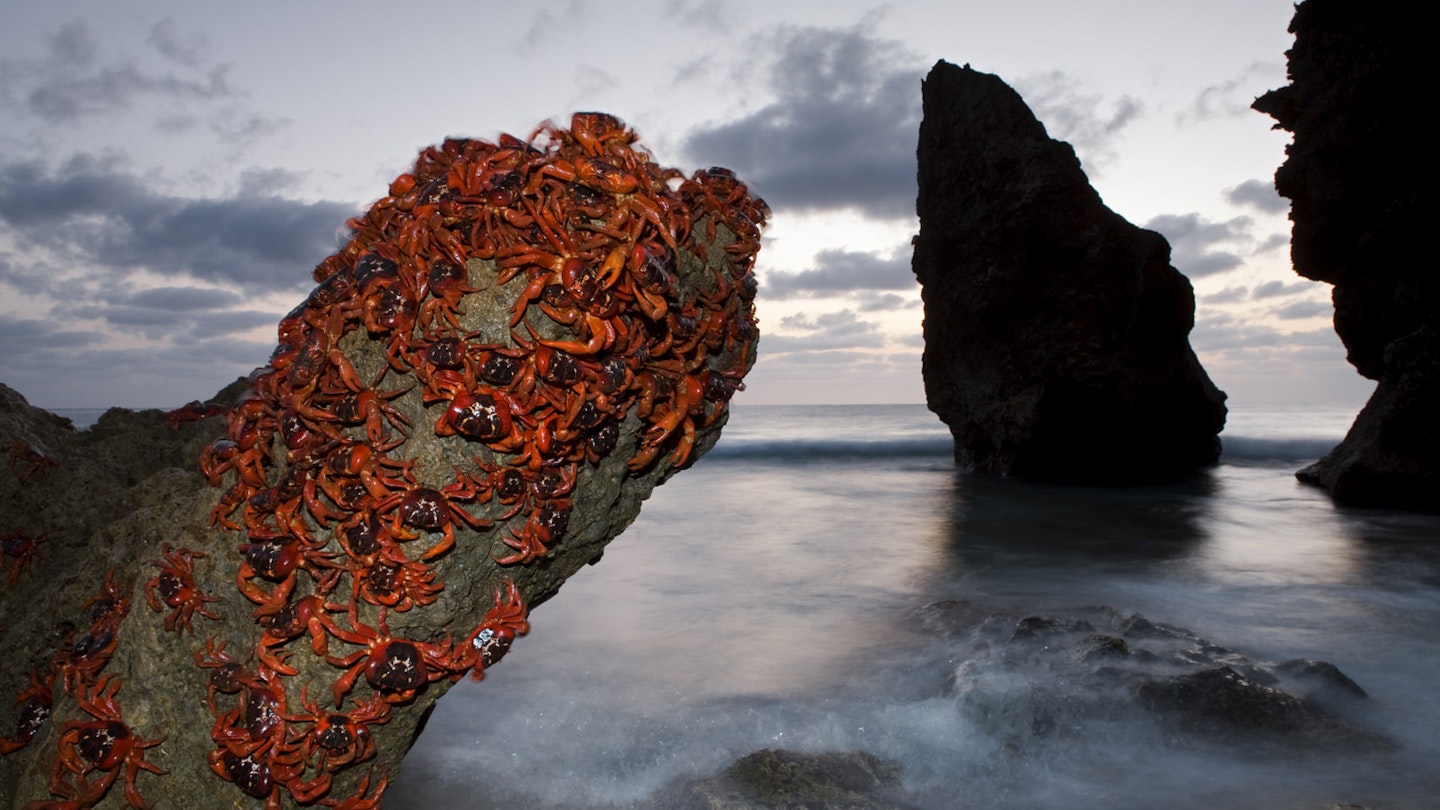Exploring Christmas Island: Nature’s Hidden Gem
Editor’s note: Since this story was written, Christmas Island’s detention centre has been reopened.
With more than 225,000 red crabs and 40 seabirds for each human resident, experiencing nature takes on a whole new meaning on Christmas Island. Although many travelers recognize its annual crab migration – celebrated by Sir David Attenborough as one of the world’s most ‘astonishing and wonderful’ sights – this remote Australian territory remains one of the nation’s most underrated attractions, drawing only 2000 visitors each year.
A three-and-a-half hour flight from Perth, Christmas Island’s seclusion greatly contributes to its limited visitors. The controversial detention centre on the island—which closed in 2019—has also affected tourism. However, as the tourism infrastructure continues to improve and the island’s phosphate mining industry winds down, now is an exceptional time to explore Australia’s own Galapagos before the secret gets out.

Into the Jungle
A wild expanse of lush rainforest, volcanic cliffs, hidden beaches, and unique wildlife, Christmas Island National Park makes up nearly two-thirds of the 135-sq-km island and is a prime highlight for visitors. The Hughs Dale Waterfall Walk, an easy 750m stroll along a raised boardwalk, is the most popular trail amidst the island’s distinctive vegetation. Just downhill from the trailhead, the path leads to Merrial Beach, a romantic sliver of sand. If a car is parked at the top of the track, it’s courteous to let its owner enjoy the beach in solitude.
Other notable beaches within the national park include Dolly Beach (accessible via a 1km boardwalk), West White Beach (1.5km one-way), Winifred Beach (1.4km one-way), and Greta Beach, which requires a rough 4WD track. More easily accessible attractions include the Blowholes, where explosive bursts of seawater shoot up to 20m through ancient lava tubes, and Margaret Knoll Lookout, offering sweeping island views and excellent birdwatching opportunities. On Wednesday afternoons, don’t miss the chance to tour the Pink House Research Station, where park staff work to save two endemic lizard species from extinction.

Totally Wild
Beyond the renowned annual crab migration—occurring anytime from October to January—the island is alive with wildlife year-round. In addition to red crabs, the island is home to approximately 20 crab species, including the Christmas Island blue crab and gigantic robber crabs (also known as coconut crabs), freely roaming the area. Like most fauna on Christmas Island, these crabs exhibit little fear of humans, making them a photographer’s delight throughout the year.
Christmas Island is also famed for its rich avian population, with around 80,000 seabirds nesting annually. Endemic species such as the Christmas Island frigatebird and the elegant white-tailed tropicbird can be observed, alongside red-footed, brown, and Abbott’s boobies nesting amidst the rocks and even in local front yards.

To the Beach
Formed through a series of geological uplifts over millions of years, Christmas Island is surrounded by jagged cliffs, rendering much of its 80km coastline inaccessible. However, this characteristic adds excitement to hunting for its few beautiful beaches. Aside from those mentioned in the national park, Lily Beach boasts the island’s largest stretch of sand along with a somewhat sheltered swimming area. It connects to the wilder Ethel Beach via a boardwalk that passes through a landscape of limestone pinnacles cherished by nesting seabirds. In town, Flying Fish Cove—often called The Cove—serves as a popular weekend retreat for locals. Don’t miss The Grotto at Golf Course Rd, a small cave featuring a refreshing natural pool cooled by an underwater spring.

Diver’s Dream
Just 20m from the shore, Christmas Island’s vibrant fringing reef drops steeply into the depths, creating some of the most exceptional scuba diving experiences worldwide. With over 60 dive sites available, avid divers can easily spend weeks here encountering rare species such as dragon moray eels and unique hybrid fish that are not found anywhere else, alongside playful spinner dolphins and majestic whale sharks.
Since 2016, international dive operator Extra Divers joined forces with the smaller Wet ‘n’ Dry Adventures, making the underwater treasures more accessible. Both operators provide snorkelling trips, but the island’s best snorkelling can often be enjoyed right off Flying Fish Cove beach.

Island Life
Located on the island’s northeastern tip, Flying Fish Cove – Christmas Island’s main settlement, essentially a mining town – may not be visually stunning, but its unique character has a way of endearing itself. Reflecting the rich cultural diversity of the local community, which numbers fewer than 2000 people, the area is adorned with various places of worship. A beautification initiative has transformed dull buildings with vibrant murals, and even renowned artist Ernest Zacharevic has left his imprint here with a piece affectionately referred to as ‘Forklift Boy’.
At the western end of Flying Fish Cove, be sure to stop by the excellent museum located on the upper floor of historic Tai Jin House. The colorful displays tell the island’s fascinating—and often dark—history. It stands near a 6-inch-barreled gun from WWII, which offered little defense during the three-year Japanese occupation.
Make It Happen
Christmas Island is accessible via twice-weekly flights from Perth (which connect to the Cocos Islands), weekly flights from Jakarta, and fortnightly flights from Kuala Lumpur. Plan to stay for at least four nights, or longer if you wish to dive into the island’s underwater wonders.
In Flying Fish Cove, there are a few guesthouses and restaurants, but for those wanting to immerse themselves in nature, consider Swell Lodge. Opened in 2018, this environmentally-friendly accommodation features two eco-luxe glamping tents perched on a peaceful cliff overlooking the ocean and surrounded by lush jungle. Rates include daily guided tours, three-course dinners prepared on your deck by a private chef, and countless opportunities to get close to the island’s iconic crabs.
If you choose not to stay at Swell, renting a car (preferably a 4WD) is crucial for navigating the island. The excellent Visitor Information Centre should be your first stop for advice and assistance.
Explore the hidden treasures of Christmas Island and create unforgettable memories surrounded by extraordinary landscapes and wildlife.




